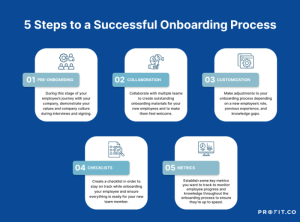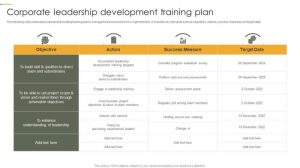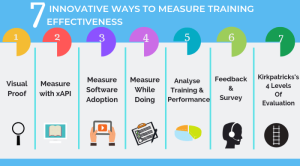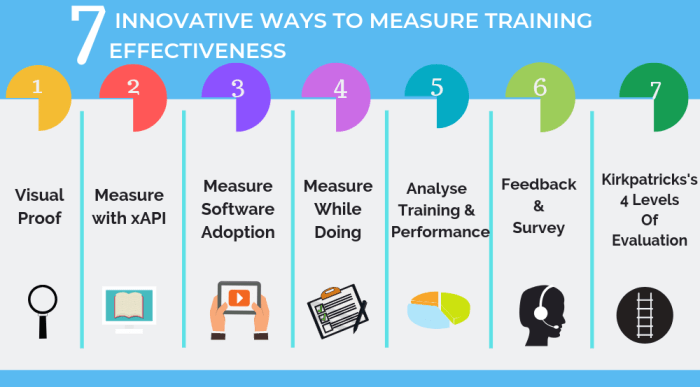
Measuring the effectiveness of corporate training programs is crucial for maximizing return on investment (ROI) and ensuring alignment with business objectives. This involves a multifaceted approach, encompassing pre-training assessments to identify skill gaps, real-time feedback mechanisms during training sessions, and post-training evaluations to gauge knowledge retention and skill application. By strategically employing various methods and key performance indicators (KPIs), organizations can accurately determine the impact of their training initiatives on employee performance and overall business outcomes.
This guide provides a comprehensive framework for evaluating corporate training, moving beyond simple satisfaction surveys to encompass a rigorous analysis of knowledge transfer, skill development, and the demonstrable contribution to improved business performance. We will explore practical methods for measuring effectiveness at each stage of the training process, from initial needs assessment to long-term impact analysis, ultimately empowering you to build more effective and impactful training programs.
Pre-Training Assessment Methods
Effective pre-training assessments are crucial for tailoring corporate training programs to the specific needs of employees. By identifying existing knowledge and skill gaps, organizations can optimize training content and delivery, maximizing the return on investment and ensuring that the training is both relevant and impactful. A well-designed assessment provides valuable insights that inform the subsequent training process.Pre-training assessments allow for a targeted approach, focusing on areas where employees need the most improvement.
This personalized learning experience enhances engagement and improves knowledge retention, ultimately leading to a more successful training outcome. Ignoring this step can result in wasted time and resources on training that is either too basic or too advanced for the participants.
Pre-Training Assessment Questionnaire: Customer Service Skills
The following questionnaire gauges employee knowledge and skills in customer service. It incorporates a variety of question types to comprehensively assess different aspects of customer service proficiency.
Instructions: Please answer all questions to the best of your ability.
- Multiple Choice: Which of the following is the most important aspect of effective customer service? a) Speed b) Efficiency c) Empathy d) Technical knowledge
- True/False: It is acceptable to interrupt a customer to clarify a point, even if they are mid-sentence. (True/False)
- Short Answer: Describe a time you successfully de-escalated a difficult customer interaction. What strategies did you use?
- Rating Scale: On a scale of 1 to 5 (1 being strongly disagree and 5 being strongly agree), rate your comfort level handling customer complaints. (1 2 3 4 5)
- Scenario-Based: A customer calls expressing frustration because their order is delayed. How would you respond?
Methods for Administering Pre-Training Assessments
Three common methods for administering pre-training assessments are online, in-person, and paper-based. Each offers distinct advantages and disadvantages.
- Online Assessments: These utilize online platforms and can be easily accessed by employees regardless of location. Advantages include cost-effectiveness (reduced printing and distribution costs), automated scoring, and immediate feedback. Disadvantages might include the need for reliable internet access and potential for cheating if not properly monitored.
- In-Person Assessments: These assessments are conducted face-to-face, often in a group setting. Advantages include opportunities for immediate clarification and interaction with the assessor, reducing potential for misunderstanding. Disadvantages include higher costs associated with venue, facilitator time, and potentially logistical challenges in scheduling.
- Paper-Based Assessments: These utilize printed questionnaires distributed and collected physically. Advantages include accessibility even without technology and potential familiarity for employees. Disadvantages include higher administrative costs associated with printing, distribution, collection, and manual scoring. There’s also a delay in obtaining results.
Utilizing Pre-Training Assessment Results
The results of the pre-training assessment are vital in tailoring the training program. By analyzing the responses, instructors can identify specific areas where employees lack knowledge or skills. For instance, if many employees score poorly on questions related to conflict resolution, the training program can allocate more time and resources to this area. Similarly, if the assessment reveals a strong understanding of a particular topic, the training can either skip over it or quickly review it, optimizing the learning time.
This data-driven approach ensures that the training is targeted, efficient, and maximizes learning outcomes. For example, if a majority of employees struggle with the scenario-based question, the training could incorporate more role-playing exercises to build their confidence and skills in handling similar situations.
Methods for Measuring Training Effectiveness During Training
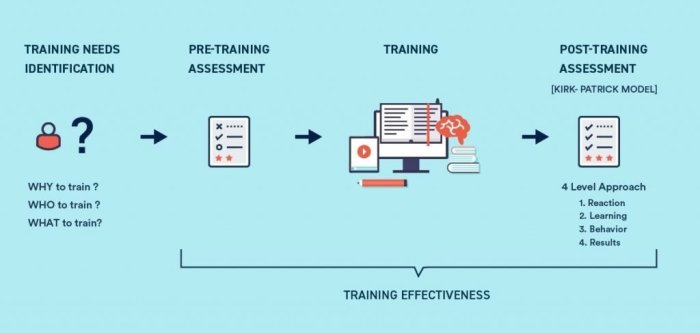
Gathering data on training effectiveness during the program itself provides valuable real-time insights into participant engagement and comprehension, allowing for immediate adjustments and improvements. This approach is crucial for maximizing the impact of the training and ensuring its relevance to the participants’ needs. By actively monitoring participant understanding and engagement throughout the training, facilitators can identify areas requiring clarification or additional support.
Real-Time Feedback Activities
Incorporating specific activities into the training program allows for the collection of real-time feedback, providing a dynamic assessment of participant learning and engagement. These activities can range from simple polls to more involved group exercises. Analyzing the data gathered from these activities enables instructors to adapt their teaching methods and content to better meet the needs of the learners.
| Activity Type | Method of Data Collection | Expected Outcome |
|---|---|---|
| Mini-Quizzes | Online platform with immediate scoring; manual collection of paper-based quizzes. | Assessment of immediate understanding of key concepts; identification of knowledge gaps. |
| Interactive Polls/Surveys (using online tools or physical response cards) | Real-time aggregation of responses using polling software or manual tallying. | Gauging participant engagement and understanding of presented material; measuring the level of interest and comprehension. |
| Group Discussions and Brainstorming Sessions | Observation of participant contribution and quality of ideas; facilitator notes on key discussion points. | Assessment of collaborative learning, critical thinking skills, and application of learned concepts; identification of areas where participants struggle with application. |
Participant Satisfaction and Areas for Improvement
Gathering feedback on participant satisfaction is vital for identifying areas needing improvement in future training sessions. This feedback should focus on both the content and delivery of the training, allowing for a comprehensive evaluation of the program’s effectiveness. Open-ended questions encourage detailed responses, while scaled questions provide quantifiable data on specific aspects of the training.Examples of questions that could be asked to gauge participant satisfaction and identify areas for improvement include: “How clear were the instructions and explanations provided?”, “Did the training materials adequately support your learning?”, “Were there any aspects of the training that were particularly helpful or unhelpful?”, and “What suggestions do you have for improving future training sessions?”.
The responses to these questions will provide valuable insights into areas where the training can be improved, ultimately leading to more effective learning outcomes.
Post-Training Evaluation Techniques

Post-training evaluation is crucial for determining the effectiveness of a corporate training program. It provides valuable insights into knowledge retention, skill application, and the overall impact of the training on employee performance. By employing a variety of assessment methods, organizations can gain a comprehensive understanding of their training’s success and identify areas for improvement.A robust post-training assessment should measure both knowledge retention and the ability to apply newly acquired skills in real-world scenarios.
This allows for a more complete picture of training effectiveness than simply testing knowledge alone.
Post-Training Assessment Design
A comprehensive post-training assessment should incorporate multiple question types to thoroughly evaluate participant learning. For instance, multiple-choice questions can efficiently assess factual knowledge recall. Short-answer questions encourage deeper processing and understanding, requiring participants to articulate their knowledge in their own words. Finally, scenario-based questions, which present realistic work situations, evaluate the ability to apply learned skills in context.
A sample assessment might include:
- Multiple Choice: “What is the correct procedure for handling a customer complaint regarding a faulty product?” (with four options)
- Short Answer: “Describe the three key steps involved in effective project management, as discussed in the training.”
- Scenario-Based: “A customer is upset because their order is delayed. How would you address this situation, considering the information provided in the training?”
Analyzing Post-Training Assessment Results
Analysis of post-training assessment results involves calculating the percentage of correct answers for each question type and overall assessment score. This provides a quantitative measure of knowledge retention and skill application. Furthermore, analyzing individual responses to short-answer and scenario-based questions can offer qualitative insights into areas where further training or support may be needed. For example, if many participants struggle with a particular scenario, it may indicate a need to revisit that topic or provide additional practical exercises.
Statistical analysis, such as comparing pre- and post-training scores, can further demonstrate the effectiveness of the training program.
Comparison of Post-Training Evaluation Methods
Three common post-training evaluation methods are surveys, performance reviews, and on-the-job observation. Each offers unique advantages and disadvantages.
| Method | Advantages | Disadvantages |
|---|---|---|
| Surveys | Quick and easy to administer; can gather feedback from a large number of participants; allows for anonymity and honest feedback. | May suffer from low response rates; relies on self-reported data, which may not always be accurate; limited ability to assess actual skill application. |
| Performance Reviews | Directly assesses on-the-job performance; provides a clear link between training and improved productivity. | Can be time-consuming; may be influenced by factors other than training; may not be conducted regularly enough for immediate feedback. |
| On-the-Job Observation | Provides direct observation of skill application; allows for immediate feedback and coaching; can identify areas for improvement. | Time-consuming and resource-intensive; requires trained observers; may not be feasible for all job roles or training programs. |
Measuring Impact on Business Outcomes
Measuring the impact of corporate training on business outcomes is crucial for demonstrating its value and securing continued investment. It moves beyond simply assessing whether employees learned the material to demonstrating a tangible return on the training investment. This involves identifying key performance indicators (KPIs) directly linked to business success and tracking changes in these metrics following the training program.Effective measurement requires a strategic approach, linking specific training objectives to measurable business outcomes.
By carefully selecting and tracking relevant KPIs, organizations can build a compelling case for the effectiveness of their training initiatives and justify future training investments.
Key Performance Indicators for Measuring Training Impact
Three key performance indicators (KPIs) can effectively measure the impact of training on business outcomes: increased sales revenue, improved customer satisfaction, and reduced employee turnover. These metrics provide a clear link between training and tangible business results.
Tracking and Analyzing KPIs to Demonstrate ROI
Tracking these KPIs involves establishing baseline measurements before the training, collecting data during and after the training, and then comparing the post-training results to the baseline. For sales revenue, this might involve comparing sales figures for trained employees against those of untrained employees or comparing sales figures before and after the training. Customer satisfaction can be tracked through surveys, feedback forms, or net promoter scores (NPS) both before and after the training.
Employee retention rates can be tracked by monitoring turnover rates before and after the training program, comparing the rates for trained and untrained employees, or comparing the rates for employees who completed the training versus those who didn’t.Analyzing the data involves calculating the difference between the pre- and post-training measurements for each KPI. This difference represents the improvement attributable to the training.
To calculate the ROI, the cost of the training program is compared to the financial benefits generated by the improvements in the KPIs. For example, if the training cost $10,000 and led to a $50,000 increase in sales revenue, the ROI would be 500%. This calculation should account for any other costs associated with the training, such as employee time spent in training.
Visual Representation of Training Effectiveness and Business Performance
A simple bar chart could illustrate the relationship. The X-axis would represent time (before training, after training). The Y-axis would represent the value of the chosen KPI (e.g., sales revenue). Two bars would show the KPI value before the training, and two bars would show the KPI value after the training, with one set representing the control group (untrained employees) and the other the experimental group (trained employees).
The difference in height between the “before” and “after” bars for the trained group would visually demonstrate the positive impact of the training on business performance. A significant difference between the trained and untrained groups after the training would further strengthen the demonstration of training effectiveness. A clear increase in the KPI value for the trained group compared to the control group after the training would visually demonstrate the effectiveness of the training program.
The Relationship Between Corporate Growth and Corporate Training
Investing in corporate training is not merely an expense; it’s a strategic investment directly impacting a company’s growth trajectory. A robust correlation exists between the level of investment in employee development and subsequent improvements in key performance indicators, ultimately driving sustainable corporate expansion. This connection stems from the multifaceted ways training enhances individual and organizational capabilities.Effective training programs are instrumental in fostering a culture of continuous learning and improvement.
This translates to a more skilled and adaptable workforce, better equipped to navigate the ever-evolving business landscape. The resulting increase in productivity, innovation, and employee retention significantly contributes to a company’s bottom line and long-term success.
Correlation Between Training Investment and Corporate Growth
Numerous studies demonstrate a positive correlation between investment in employee training and subsequent corporate growth. For example, a study by the American Society for Training and Development (ASTD, now ATD) found that companies with robust training programs experienced higher profitability and revenue growth compared to their counterparts with limited training initiatives. Furthermore, companies prioritizing employee development often exhibit higher levels of employee engagement and retention, reducing recruitment and training costs associated with high turnover.
Consider the example of Google, known for its extensive employee training programs, which have contributed to its sustained innovation and market dominance. Their investment in employee skill development directly correlates with their consistent growth and competitive edge.
Contribution of Effective Training to Employee Development, Productivity, and Competitive Advantage
Effective training programs directly contribute to improved employee skills, knowledge, and performance. This enhanced competency translates to increased productivity, as employees are better equipped to handle their responsibilities efficiently and effectively. Furthermore, training fosters a culture of innovation and problem-solving, leading to the development of new products, services, and processes that give companies a competitive advantage. For instance, a company that invests in training its sales team on the latest sales techniques might see a significant increase in sales revenue, directly contributing to corporate growth.
Similarly, training employees on new technologies can lead to process improvements and cost reductions, further boosting profitability.
Designing Training Programs to Support Strategic Corporate Growth Objectives
Designing a training program that aligns with strategic corporate growth objectives requires a systematic approach. First, identify specific skills gaps that hinder the achievement of these objectives. This involves analyzing current employee competencies and comparing them to the skills required for future success. Next, develop a training curriculum that directly addresses these skill gaps, focusing on practical application and measurable outcomes.
The program should incorporate various learning methods, including on-the-job training, workshops, online courses, and mentorship programs, to cater to diverse learning styles. Finally, continuous evaluation and feedback are crucial to ensure the program remains relevant and effective in supporting the company’s growth strategy. A well-designed training program, therefore, becomes an integral part of the company’s overall strategic plan, contributing directly to its long-term success and growth.
Effective corporate training is not merely about delivering information; it’s about driving tangible improvements in employee performance and contributing directly to business success. By meticulously measuring training effectiveness through a combination of pre- and post-training assessments, real-time feedback mechanisms, and the tracking of relevant KPIs, organizations can gain valuable insights into program strengths and weaknesses. This data-driven approach enables continuous improvement, ensuring that training programs remain relevant, impactful, and aligned with evolving business needs.
Ultimately, a focus on measurement allows organizations to demonstrate the clear ROI of their investment in employee development, solidifying its importance as a strategic business function.
FAQ Resource
What if my employees don’t have time for pre- and post-training assessments?
Consider shortening assessments, offering incentives for completion, or using microlearning modules with embedded assessments to minimize time commitment.
How can I ensure the training content remains relevant and engaging?
Regularly solicit feedback from participants, update content based on industry trends and best practices, and incorporate interactive elements and real-world case studies.
How do I handle negative feedback from training evaluations?
Analyze negative feedback to identify areas for improvement in the training program. Use this feedback constructively to revise the training materials, delivery methods, or overall approach.
What if the training doesn’t show a direct impact on KPIs immediately?
Some training initiatives may have a longer-term impact. Track KPIs over a longer period and consider qualitative data (e.g., employee feedback, improved morale) as supplementary evidence of effectiveness.
